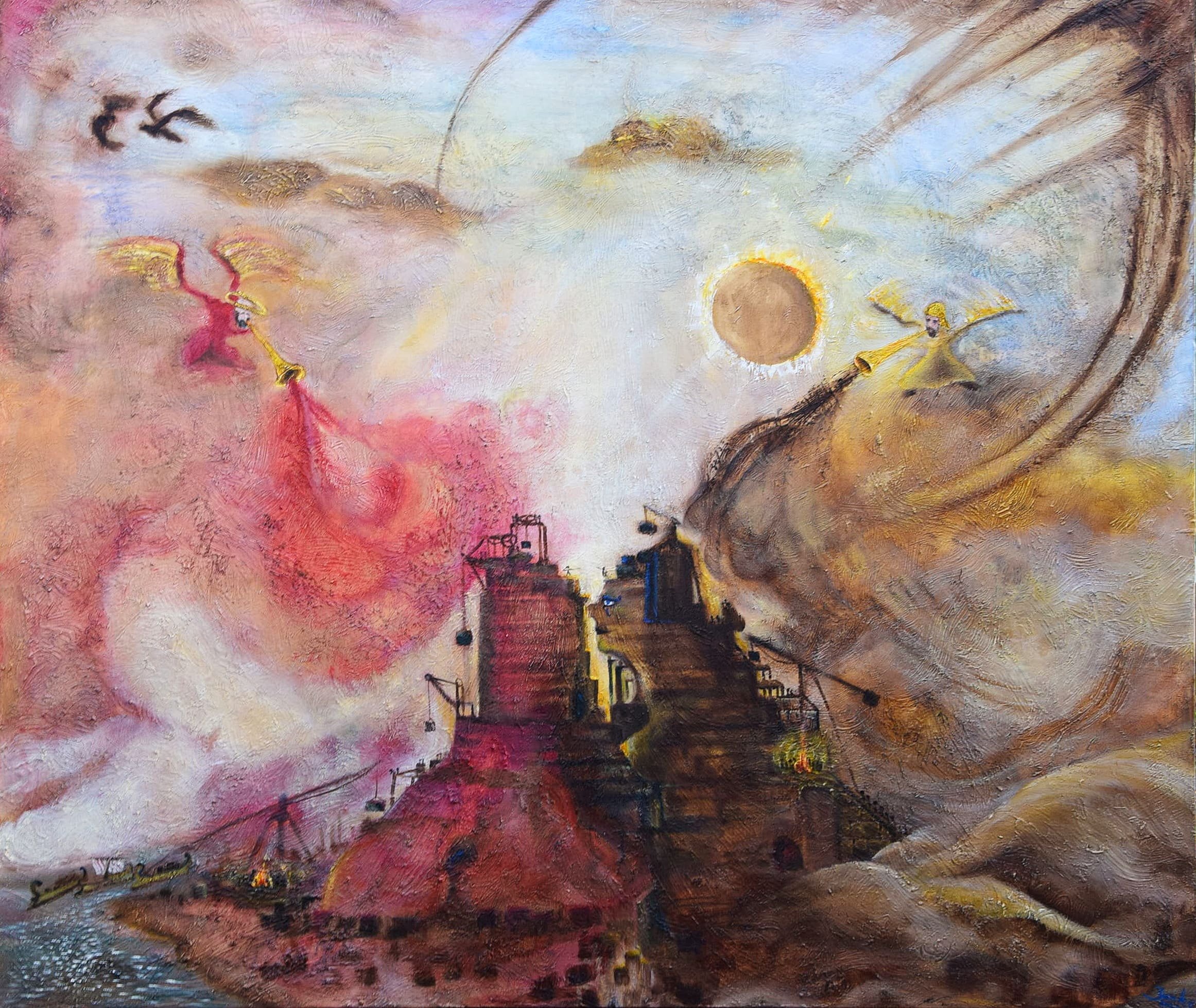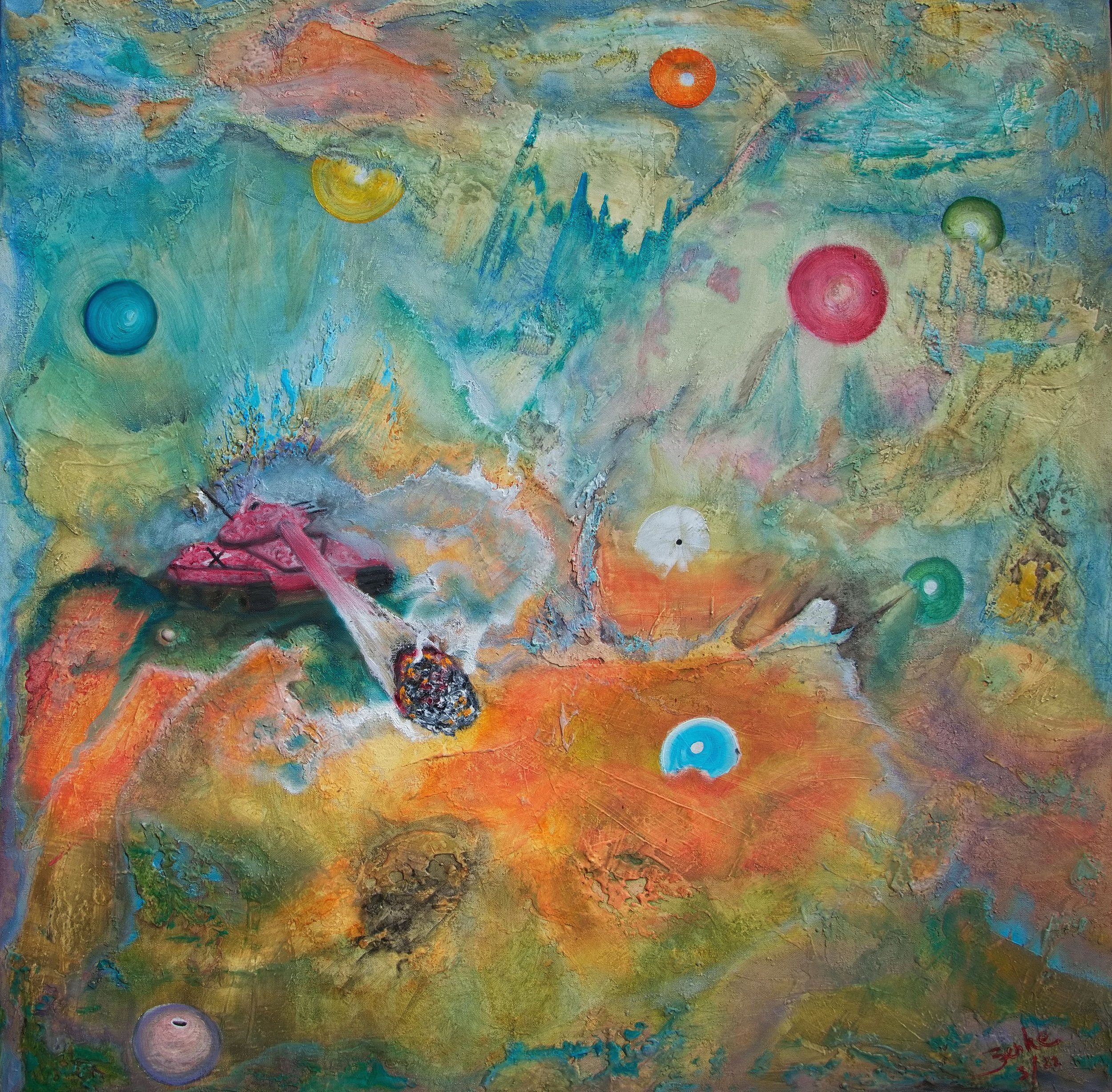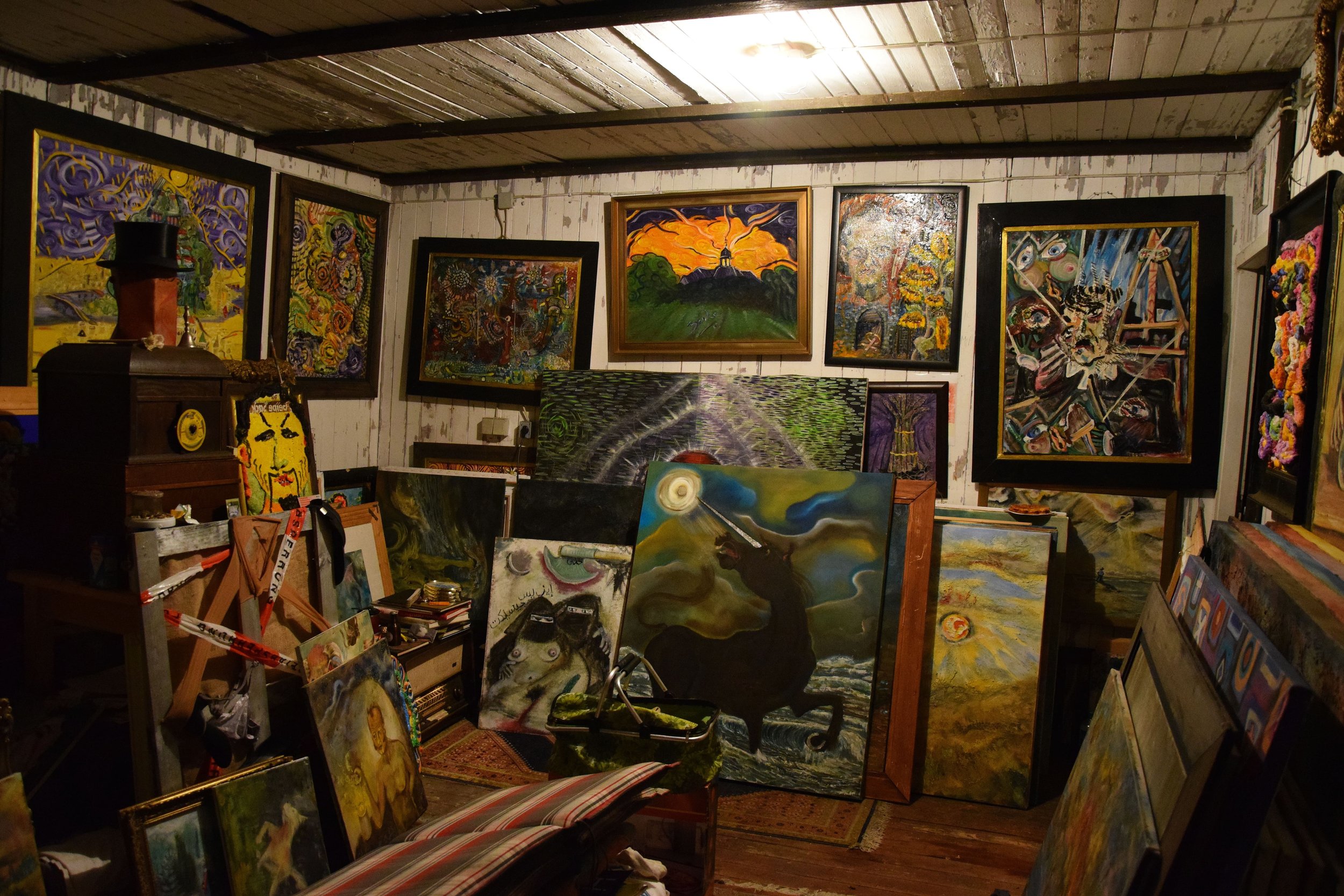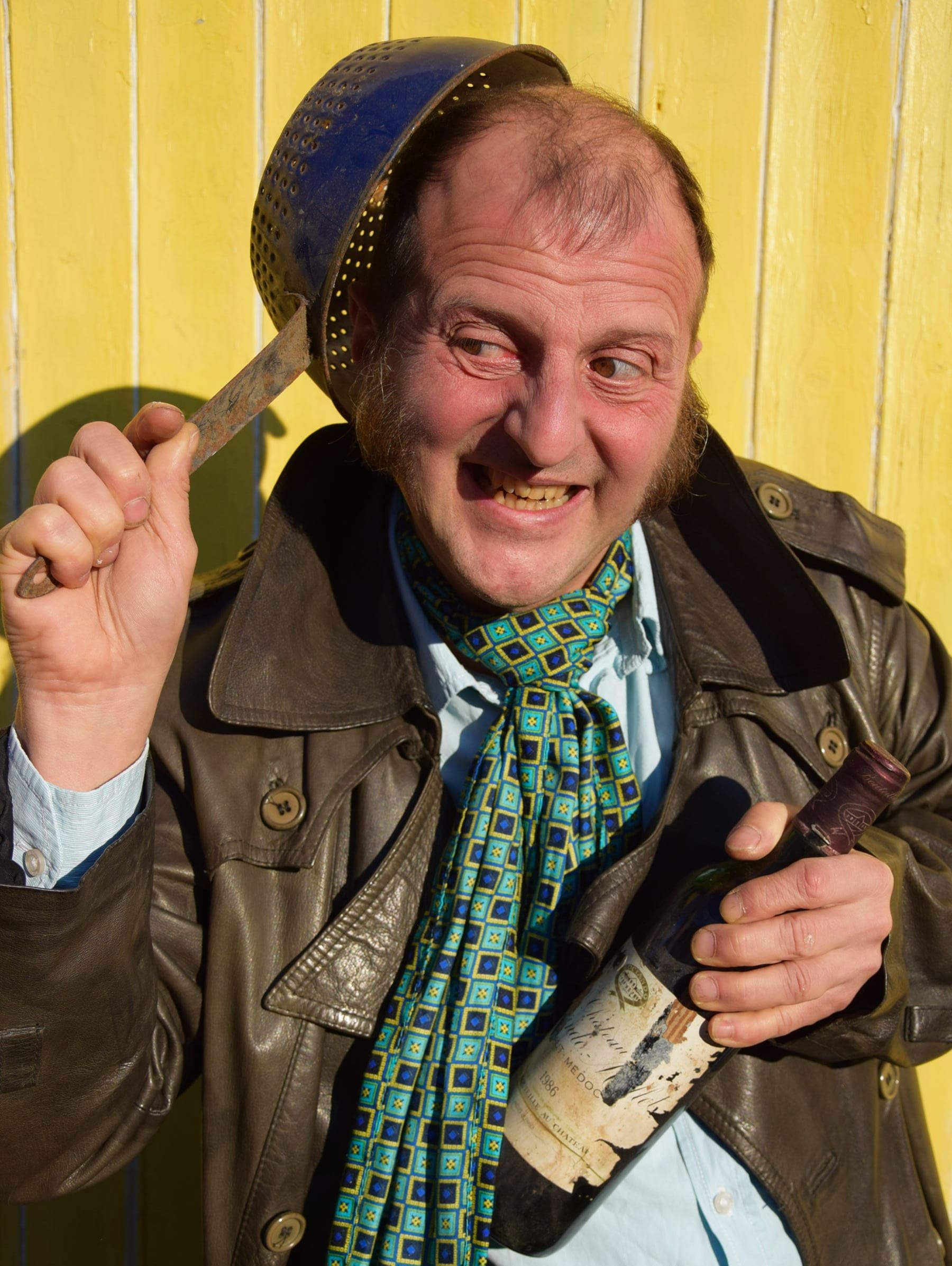Interview
Tim Zenke
Tim Zenke has a Master’s degree from Westfälische Wilhelms-Universität Münster. He’s an archaeologist, art historian, poet and philosopher who goes by the names Pyrosoph and Sirlancelot.
Tim aims to create art that can speak for itself. As a proud artist, he fundamentally refuses to put anything before the actual art; not his life, his vita, exhibitions and sales, nor his academic achievements.
Tim refrains from making laudatory speeches about himself, and prefers that the strength of his work convinces the view, without any reference to his name nor his reputation.
Tim believes that data on people only creates an exaggerated cult of personality and false impressions of the facts. He asserts that what a good artist has to say is what his art shows, and the title should provide a meaningful indication of the subject and content.
What is your background and how did you start your journey in the art world?
“Since it’s a basic human need to communicate with one another, my drawings and paintings have been my companions throughout my life. I use them to show other people what I think and what I have to say about our time and its peculiarities.
Art is the communicative means of conveying something visually that would otherwise trigger a longer story.”
What inspires you most?
“The brain forms the art, not the hand nor the gut. I’m inspired by the many different ways of making art statements because communication about works of art is diverse. Art is not about decoration or pleasure. Art includes a lot more statements and personal thinking than the profane desire for beauty. Therefore, art is the means of expressing many feelings, impressions, and statements combined in a painting through special qualities. That's fascinating and has to be put into practice.”


What themes do you pursue? Is there an underlying message in your work?
“The themes that touch me are reflected in my art. Everything that moves me in society is painted. My artworks represent statements of our society’s times, its peculiarities, and its habits. I don’t paint the lies—the human circus and things that you really shouldn’t paint. That's the challenge. I paint what needs to be said. By painting the circumstances as I recognize them, I become a witness to art history.
The style and aesthetics of my art always depend on my level of expressiveness. I create what I want to show, not what people want to see and hear. This can sometimes be very colorful and pleasant, but is also useful for depicting hard topics.”
How would you describe your work?
“My work steps outside the details, color, subjects, or forms presented on my canvas. My oils evoke a sense of chaos in emotions, and explore subtle abstract concepts. They can touch the deep reflections within, as it relates to the emotional states that everyone goes through during their beautiful journey of life.
Finally, the question of art birthing something new every day is just an impulse given by social energy particle-based stimuli by the fleeting second. From the reified symbolic expression of creative imagination all by the color and form created on my canvas.”
“
Art is not a photo that only captures the moment. Art is the summary of genius.
I strive for my art to explain itself. If it doesn’t manage to do that, then it isn’t art but banal decoration which millions of people have incorrectly called art.”
Which artists influence you most?
“I am enthusiastic about many artists who have developed art. I wish to learn from them the possibilities of combined painting styles. Edouard Manet provoked with his statements on how art described his world, which I emulate for today’s society—to show it as it shows itself to me in its double standards and decadence.
I also admire William Turner for his courage. At the beginning of the 19th century. he was dissolving the themes in a fog and capturing moods. He was the first impressionist for me. And Vincent van Gogh shows me how to tame powerful violence in a bold application of color on the delicate canvas. It is these three geniuses who visibly accompany me.”
What is your creative process like?
“The picture is created when I discover something that needs to be painted. The image is created in my mind and then transformed into art in such a way that the viewer understands what I want to express through the painting. I create my work the old-fashioned way, where I first get the idea for the topic and content and then visualize it. Next, I go outside to my studio hut and mentally prepare myself to create big statements.
With the idea in the back of my mind, the greasy primer from my own mixture is applied to the canvas. After drying, the image background with the motif is laid on top of it, no later than the next day. I logically integrate it in perspective and with focal points according to the old rules of art in order to present it coherently. Little or nothing is left to chance, because chance doesn’t know what I want to express. Chance creates images of chaos and shows no art. Once the motif has become clear enough, I set about adjusting the style and color, so that style and motif are consistent with the background in terms of strength and effect. If everything is correct according to what I picture in my mind, then the painting is ready to show that which lies unspoken in my head.”
What is an artist’s role in society and how do you see that evolving?
“I am a social painter. I paint the face of society as it is, not as it would like to be. In doing so, I give society a picture of what it shows me about itself. That image is certainly not always nice, but my work acts as a mirror of our epoch—an epoch of great double standards and fakes. Yes, this has always been a horrible subject to capture in oils for a long time. We live between foreign interests and lies that can be exposed. It’s about not succumbing to the greed of others in this hypocrisy about safety, happiness, and freedom.
It’s perfectly clear to me that art is more difficult to convey than decoration. In order to survive, I’ve found my works of art are certainly better suited for museums and collections than for the terribly chic, decorated living room of Aunt Ottilie with the small purse. Despite this, I'm always smiling, and I’m always a happy personality with some special charm.”
Have you had any noteworthy exhibitions you'd like to share?
“My next exhibitions will take place at Spielbrink Court in Münster-Handorf, Berlin between 8 and 9 July 2023. It will be an exhibition for my friends and my invited guests.
My art is available through Saatchi Galleries London and directly from the artist in Münster whom you can call on +49 178 3999499. The prices are in the internationally high segment due to the unique quality. You can appreciate more of my work here.”





